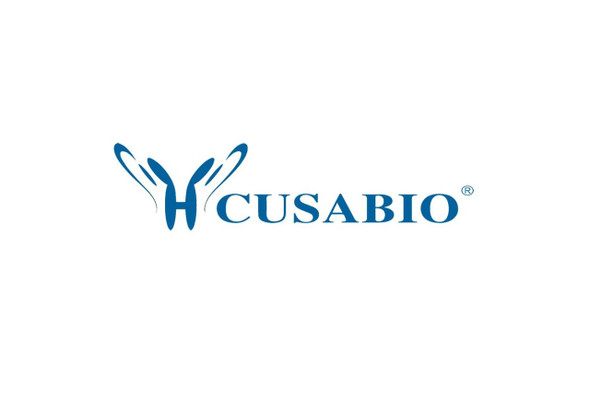Cusabio Human Recombinants
Recombinant Human Peroxiredoxin-1 (PRDX1) | CSB-YP018653HU
- SKU:
- CSB-YP018653HU
- Availability:
- 3 - 7 Working Days
Description
Recombinant Human Peroxiredoxin-1 (PRDX1) | CSB-YP018653HU | Cusabio
Alternative Name(s): Natural killer cell-enhancing factor A Proliferation-associated gene protein Thioredoxin peroxidase 2 Thioredoxin-dependent peroxide reductase 2 PAGA, PAGB, TDPX2
Gene Names: PRDX1
Research Areas: Cardiovascular
Organism: Homo sapiens (Human)
AA Sequence: MSSGNAKIGHPAPNFKATAVMPDGQFKDISLSDYKGKYVVFFFYPLDFTFVCPTEIIAFSDRAEEFKKLNCQVIGASVDSHFCHLAWVNTPKKQGGLGPMNIPLVSDPKRTIAQDYGVLKADEGISFRGLFIIDDKGILRQITVNDLPVGRSVDETLRLVQAFQFTDKHGEVCPAGWKPGSDTIKPDVQKSKEYFSKQK
Source: Yeast
Tag Info: N-terminal 10xHis-tagged
Expression Region: 1-199aa
Sequence Info: Full Length
MW: 24.6 kDa
Purity: Greater than 85% as determined by SDS-PAGE.
Relevance: Involved in redox regulation of the cell. Reduces peroxides with reducing equivalents provided through the thioredoxin system but not from glutaredoxin. May play an important role in eliminating peroxides generated during metabolism. Might participate in the signaling cascades of growth factors and tumor necrosis factor-alpha by regulating the intracellular concentrations of H2O2. Reduces an intramolecular disulfide bond in GDPD5 that gates the ability to GDPD5 to drive postmitotic motor neuron differentiation
Reference: "A method for detection of overoxidation of cysteines: peroxiredoxins are oxidized in vivo at the active-site cysteine during oxidative stress." Wagner E., Luche S., Penna L., Chevallet M., van Dorsselaer A., Leize-Wagner E., Rabilloud T. Biochem. J. 366:777-785(2002)
Storage: The shelf life is related to many factors, storage state, buffer ingredients, storage temperature and the stability of the protein itself. Generally, the shelf life of liquid form is 6 months at -20?/-80?. The shelf life of lyophilized form is 12 months at -20?/-80?.
Notes: Repeated freezing and thawing is not recommended. Store working aliquots at 4? for up to one week.
Function: Thiol-specific peroxidase that catalyzes the reduction of hydrogen peroxide and organic hydroperoxides to water and alcohols, respectively. Plays a role in cell protection against oxidative stress by detoxifying peroxides and as sensor of hydrogen peroxide-mediated signaling events. Might participate in the signaling cascades of growth factors and tumor necrosis factor-alpha by regulating the intracellular concentrations of H(2)O(2)
Involvement in disease:
Subcellular Location: Cytoplasm, Melanosome
Protein Families: Peroxiredoxin family, AhpC/Prx1 subfamily
Tissue Specificity:
Paythway: Cellageingandmetabolism
Form: Liquid or Lyophilized powder
Buffer: If the delivery form is liquid, the default storage buffer is Tris/PBS-based buffer, 5%-50% glycerol. If the delivery form is lyophilized powder, the buffer before lyophilization is Tris/PBS-based buffer, 6% Trehalose, pH 8.0.
Reconstitution: We recommend that this vial be briefly centrifuged prior to opening to bring the contents to the bottom. Please reconstitute protein in deionized sterile water to a concentration of 0.1-1.0 mg/mL.We recommend to add 5-50% of glycerol (final concentration) and aliquot for long-term storage at -20?/-80?. Our default final concentration of glycerol is 50%. Customers could use it as reference.
Uniprot ID: Q06830
HGNC Database Link: HGNC
UniGene Database Link: UniGene
KEGG Database Link: KEGG
STRING Database Link: STRING
OMIM Database Link: OMIM









